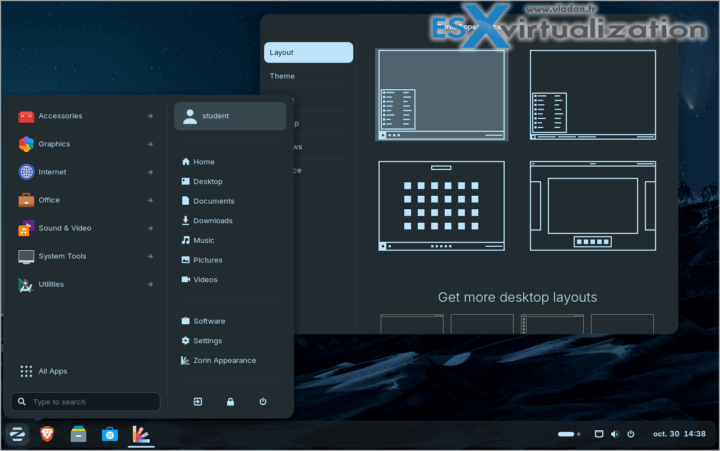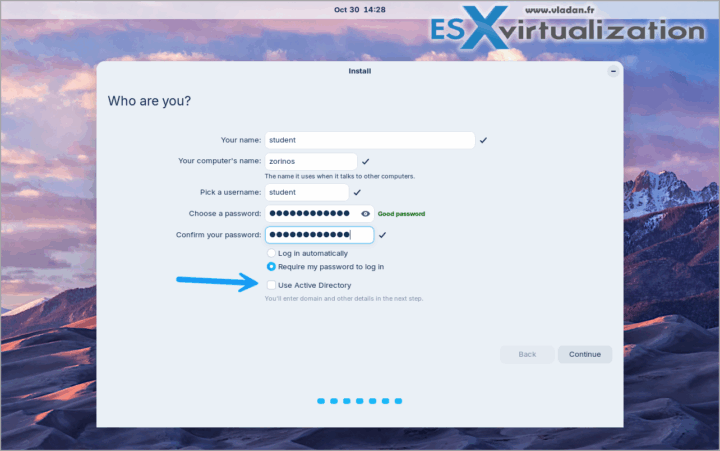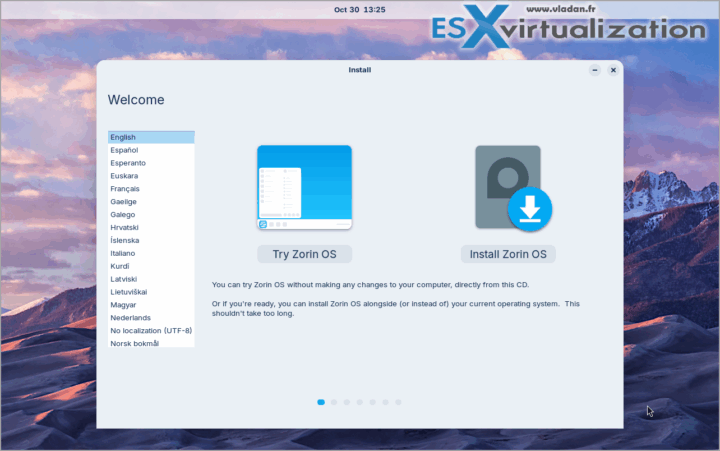If you've been following my ramblings on Linux distros, you know I'm no stranger to hunting for that sweet spot between power and simplicity. Back in February 2024, I geeked out over Zorin OS Lite – that zippy little beast that breathes new life into dusty old hardware. Fast forward to today, October 2025, and Zorin OS has leveled up big time with version 18. Dropped just last week on October 14 (talk about timing – the same day Windows 10 officially kicks the bucket), it's screaming “switch me now!” to anyone fed up with Windows 11's resource-hogging ways and creepy telemetry vibes.
I've been knee-deep in virtualization for years, spinning up VMs left and right, and Windows 11? Too heavy. Too cumbersome. It's like inviting a nosy elephant into your living room. Constant ads, forced updates that eat your CPU for breakfast, and a UI that's more gimmick than grit. If your rig is groaning under the weight or you're just tired of Microsoft peeking over your shoulder, Zorin OS 18 is your escape hatch. It's technical enough to satisfy the tinkerer in you, but familiar enough to feel like home.
Let's dive in – I'll keep it real, with the specs, the why, and a nudge to give it a spin.Why Zorin OS 18? Because Windows 11 Isn't Cutting It AnymoreFirst off, the hook: Windows 10 support ends today (October 30, 2025, if you're reading this fresh). Microsoft's shoving everyone toward 11, but if your hardware doesn't play nice with TPM 2.0 or you're not thrilled about the bloat (hello, 4GB+ RAM baseline just to idle smoothly), you're not alone.
Zorin OS 18 flips the script – it's built on Ubuntu 24.04 LTS, promising rock-solid stability and updates until June 2029. No more surprise reboots mid-project.What makes it a winner for ex-Windows users? That chameleon-like desktop. Out of the box, it mimics Windows 11's layout so closely you'll swear it's a clone – taskbar at the bottom, Start menu vibes, even rounded corners.
But unlike the real deal, it's your OS. Customize it to look like macOS, ChromeOS, or classic Windows 7 with a few clicks via the Zorin Appearance tool. No registry hacks or third-party tweaks needed.And the intrusion factor? Linux's open-source DNA means no phoning home to Redmond. Zorin's privacy-first approach blocks trackers by default, and you control your data. In my tests (yeah, I fired up a fresh VM on VMware Workstation Pro), it felt liberating – like shedding a too-tight suit.
Zorin OS can be integrated into your existing (business) environment as during the setup you have directly the option to join a Microsoft Active Directory (AD) which sits in many SMB environments.
Under the Hood: Technical Goodies That Pack a Punch
Zorin isn't just pretty; it's engineered for performance without the fluff.
Here's the tech breakdown:
- Kernel and Base: Powered by Linux kernel 6.8 (up from 5.15 in Zorin 17), with full support for modern hardware like Intel Arc GPUs and AMD Ryzen AI chips. It's optimized for efficiency – think sub-1GB RAM idle on the Core edition, versus Windows 11's 2-3GB snack.
- Desktop Environments:
- Core and Pro: GNOME 46 with Zorin's custom shell for that buttery-smooth feel. Gesture support for touchpads, and Wayland by default for better security and HiDPI scaling.
- Lite: Still rocking XFCE for those legacy machines (512MB RAM minimum – remember my old post? It flies on ancient netbooks).
- New in 18: A revamped file manager (Files app) with tabbed browsing and bulk rename tools. Plus, integrated Wine 9.0 for running Windows apps seamlessly – I tossed in an old Excel sheet, and it hummed along without a hiccup. Pro edition sweetens it with a pro-grade creative suite: GIMP (Photoshop rival), Kdenlive for video editing, and even Blender for 3D work.
- Security and Updates: AppArmor profiles for app sandboxing, full-disk encryption via LUKS, and a graphical firewall. Updates roll out incrementally – no full-system downloads unless you want 'em. And for devs or homelabbers like me, Flatpak and Snap support means easy access to bleeding-edge tools without breaking your setup.
System reqs are a dream:
- Minimum: 1GHz dual-core, 2GB RAM, 15GB storage (Lite: even lower).
- Recommended: 2GHz quad-core, 4GB RAM for Core/Pro.
Pro tip: If you're virtualizing (my jam), it guests beautifully in Proxmox or ESXi – just allocate 2 vCPUs and 4GB RAM, and you're golden.
Getting Started: From Download to Desktop in 20 Minutes
Ditching Windows doesn't have to be a saga. Head to zorin.com/os/download – Core is free forever, Lite too, and Pro's a one-time $39 unlock for extras like 8 premium layouts and support.
- Grab the ISO: Pick your edition. I went Core for this review.
- Bootable Media: Use Rufus (Windows) or dd (Linux/Mac) on a USB. Etcher's GUI makes it foolproof.
- Install: Boot from USB, follow the wizard – it auto-detects partitions, offers dual-boot with Windows if you're easing in. Calamares installer keeps it point-and-click.
- Post-Install Tweaks: Fire up the Software store (GNOME's with Flatpak backend) for apps. Want Microsoft Edge? It's a snap install away.
In my dual-boot test on an old Dell Latitude, it coexisted peacefully with Windows 11 – GRUB menu lets you choose your poison.One caveat: Hardware quirks? Zorin's got a live environment to test-drive first. And for Wi-Fi or NVIDIA drivers, the Additional Drivers tool sorts it post-install.
Wrapping Up: Your PC Deserves Better – Try Zorin Today
Zorin OS 18 isn't just an OS. It's a good alternative against bloated, bossy software. Lighter on resources, tighter on privacy, and way more fun to tweak – it's the upgrade Windows 11 wishes it could be. If you're staring at that “Your PC is at risk” nag or just craving speed on aging gear, download it now.
Builds on what I loved about Lite, but with 2025 polish.What's your take? Switched yet, or still on the fence? Drop a comment below – I'd love to hear your war stories. And if you're into more Linux escapes, check my archives for VMware tips or homelab hacks. Until next time, keep virtualizing!
More posts from ESX Virtualization:
- Winux OS – Why I like it?
- VMware Alternative – OpenNebula: Powering Edge Clouds and GPU-Based AI Workloads with Firecracker and KVM
- Proxmox 9 (BETA 1) is out – What’s new?
- Another VMware Alternative Called Harvester – How does it compare to VMware?
- VMware vSphere 9 Standard and Enterprise Plus – Not Anymore?
- VMware vSphere Foundation (VVF 9) and VMware Cloud Foundation (VCF 9) Has been Released
- Vulnerability in your VMs – VMware Tools Update
- VMware ESXi FREE is FREE again!
- No more FREE licenses of VMware vSphere for vExperts – What’s your options?
- VMware Workstation 17.6.2 Pro does not require any license anymore (FREE)
- Two New VMware Certified Professional Certifications for VMware administrators: VCP-VVF and VCP-VCF
- Patching ESXi Without Reboot – ESXi Live Patch – Yes, since ESXi 8.0 U3
- Update ESXi Host to the latest ESXi 8.0U3b without vCenter
- Upgrade your VMware VCSA to the latest VCSA 8 U3b – latest security patches and bug fixes
- VMware vSphere 8.0 U2 Released – ESXi 8.0 U2 and VCSA 8.0 U2 How to update
- What’s the purpose of those 17 virtual hard disks within VMware vCenter Server Appliance (VCSA) 8.0?
- VMware vSphere 8 Update 2 New Upgrade Process for vCenter Server details
- What’s New in VMware Virtual Hardware v21 and vSphere 8 Update 2?
- vSphere 8.0 Page
- ESXi 7.x to 8.x upgrade scenarios
- VMware vCenter Server 7.03 U3g – Download and patch
- Upgrade VMware ESXi to 7.0 U3 via command line
- VMware vCenter Server 7.0 U3e released – another maintenance release fixing vSphere with Tanzu
- What is The Difference between VMware vSphere, ESXi and vCenter
- How to Configure VMware High Availability (HA) Cluster
Stay tuned through RSS, and social media channels (Twitter, FB, YouTube)




Leave a Reply